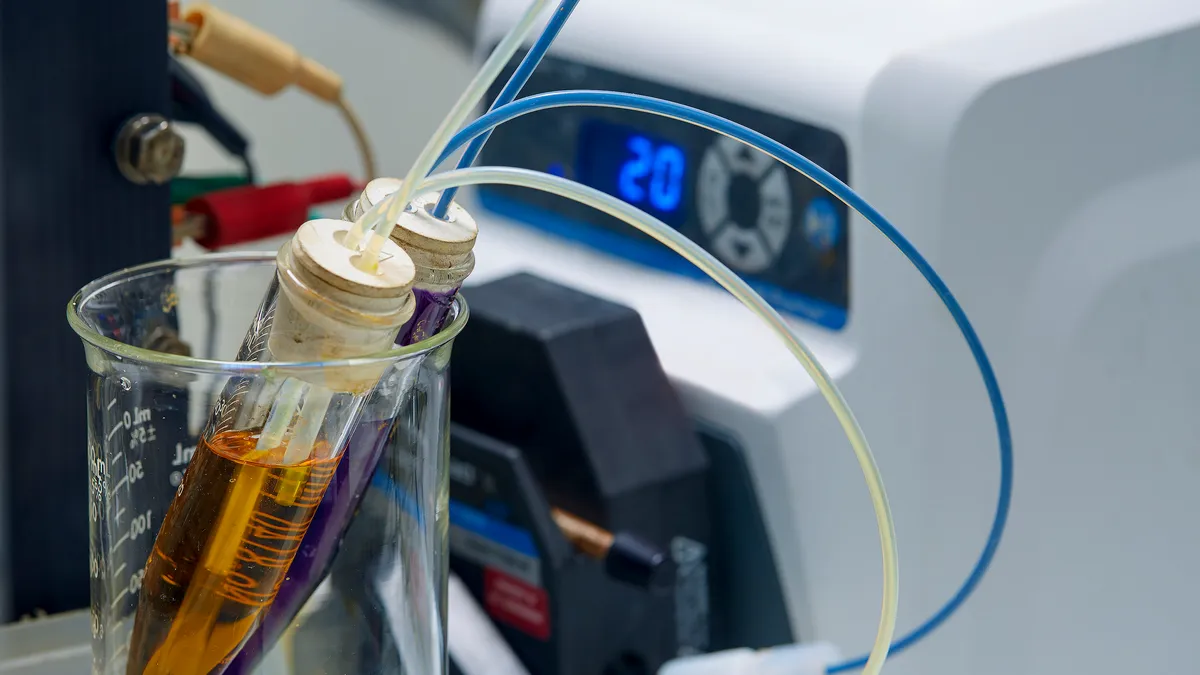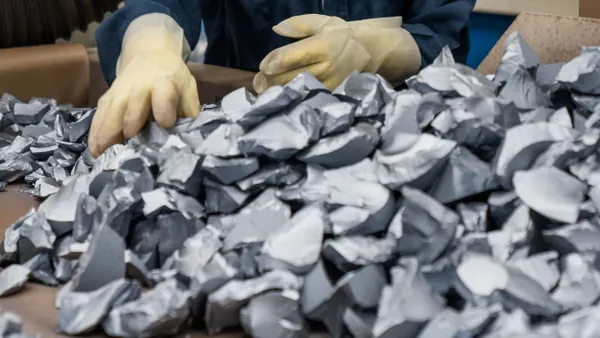Dive Brief:
-
Scientists at the University of Michigan and the University of Utah working on flow battery chemistry say they have developed an energy-storing molecule that is 1,000 times more stable than existing compounds.
-
The researchers used predictive computer modeling to test variations in the molecular structure of chemicals and found a promising candidate for the anolyte that is based on pyridinium.
- The researchers are working to identify a catholyte to pair with the new anolyte for use in redox flow batteries that are safer and longer lasting than those using existing chemistry.
Dive Insight:
Lithium-ion batteries dominate the energy storage market, but researchers around the world are hoping that new chemistries could hoping to improve flow batteries to the point where they can stake significant market share, especially in the utility-scale storage applications.
Flow batteries store energy in liquid solutions in external tanks, one for the anolyte (negative) and one for the catholyte (positive). The bigger the tank, the more energy they can store. That enables them to scale easily, but after many charge-discharge cycles they require maintenance of the electrolyte to restore the capacity.
The key to improving flow batteries is bringing down costs by finding new chemistries that are cheaper, less corrosive and more stable. Most flow batteries now use vanadium, which is costly and potentially toxic.
Researchers have experimented with a variety of chemicals, including variations on vitamin B2, in an effort to find chemicals that are abundant, safe and can still carry an electrical charge after multiple charge-discharge cycles.
Using a predictive computer model, the Michigan and Utah scientists build what they described as a “bumper” around a molecule to increase its charging life span.
“Our first compound had a half-life of about eight-12 hours,” University of Utah chemist Matthew Sigman said, referring to the period in which half of the compound would decompose. But with tweaking he was able to come up with a compound that the model predicted would be stable for months.













